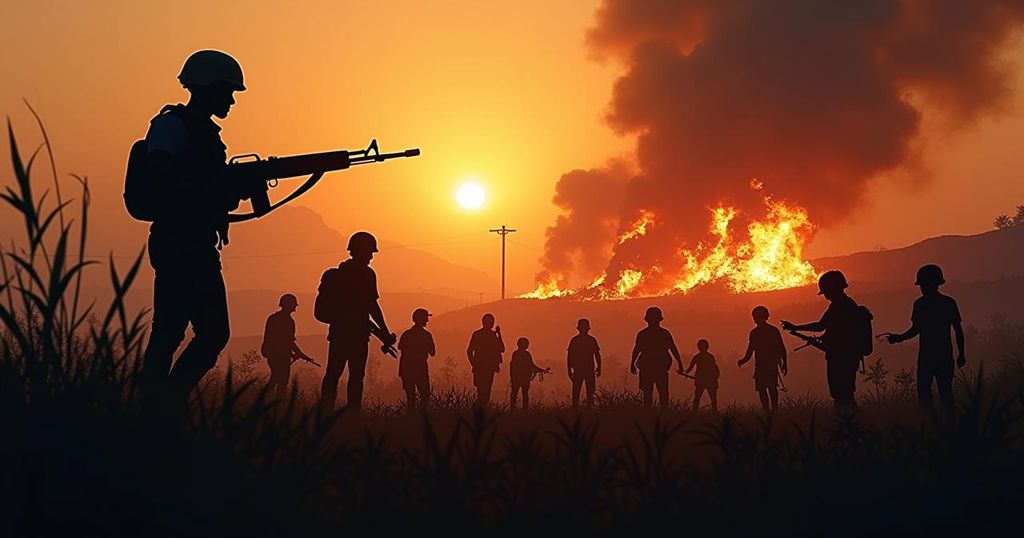Tragic Shooting Claims Lives of Six Migrants Near Guatemalan Border

Six migrants from Egypt, Peru, and Honduras were killed when Mexican soldiers opened fire on a truck near the Guatemalan border, prompting an investigation into the soldiers. Three Egyptians and one Peruvian were confirmed dead, with at least ten others injured. The incident reflects ongoing issues with violence against migrants in Mexico, drawing international scrutiny and calls for accountability.
In a tragic incident near the Guatemalan border, six migrants from Egypt, Peru, and Honduras lost their lives when Mexican army soldiers opened fire on their truck. This occurrence has been described as “deplorable” by Mexican President Claudia Sheinbaum, who expressed her condolences on Thursday. Among those killed, three were identified as Egyptian nationals, one from Peru, and one from Honduras, while the identity of the sixth individual remains unknown. At least ten other migrants sustained injuries; however, their current conditions have not been disclosed. The Peruvian government has confirmed that one of its citizens was among the deceased and has escalated calls for an urgent investigation into this matter, amidst historically strained relations with Mexico following a diplomatic spat in 2022. President Sheinbaum stated that the two soldiers who discharged their weapons had been temporarily relieved of duty and handed over to civilian authorities for questioning, although no formal charges had been filed against them at that point. The shooting is noted as the most severe incident involving migrant fatalities by Mexican authorities since a similar event in 2021, where 17 migrants were killed by police. The incident unfolded in Chiapas, particularly near Tapachula, a region notorious for migrant smuggling, where criminal organizations often engage in turf wars. Initial reports from the Mexican Defense Department indicated that soldiers believed they were fired upon by the migrants’ convoy, which reportedly fled upon being ordered to stop. It was reported that three trucks were involved, and one truck eventually stopped, revealing the presence of 33 migrants from multiple nations, including Nepal, Cuba, India, and Pakistan. Subsequently, four individuals were confirmed dead, while twelve were injured, with two later succumbing to their wounds. The local prosecutor’s office confirmed that all deceased individuals died from gunshot wounds, yet there remains uncertainty regarding whether army fire was the cause. Irineo Mujica, a migrant rights activist, challenged the narrative that migrants or their smugglers initiated gunfire, asserting it is common for them to traverse these routes through bribery rather than violence. Additionally, the Mexican Council of Bishops condemned the incident, characterizing the use of force as excessive, and labeled it indicative of a broader pattern of violence rather than an isolated case.
The recent shooting near the Guatemalan border underscores the precarious situation faced by migrants traversing Mexico, particularly from nations experiencing socio-economic turmoil. This tragedy resonates history, as it reflects a pattern of violence against migrants, exacerbated by Mexico’s narcotics-related violence and the contentious relationship between military forces and civilian oversight. The incident highlights the dangers that arise when military forces are tasked with law enforcement responsibilities without appropriate training or oversight, complicating the already tenuous situation for migrants who frequently find themselves at the mercy of both criminal organizations and law enforcement agencies.
The incident resulting in the loss of six migrants’ lives has reignited serious concerns regarding the treatment of migrants by state forces in Mexico. It calls for urgent accountability mechanisms to ensure such egregious actions are thoroughly investigated to prevent recurrence. As the country grapples with the challenges posed by both migration and organized crime, the growing pattern of violence against vulnerable populations necessitates a comprehensive reassessment of military involvement in civilian law enforcement.
Original Source: apnews.com






